How Can You Calculate Your Truckload Capacity? Use Software, Don’t Do It Manually
Do you want to know how you can calculate your truckload capacity? If so, grab a tape measure, a piece of paper, a pencil, and let’s get calculating. This seems complicated, maybe there is an easier and more efficient way? Of course, there is and we will show you how to find out your truckload capacity in no time.
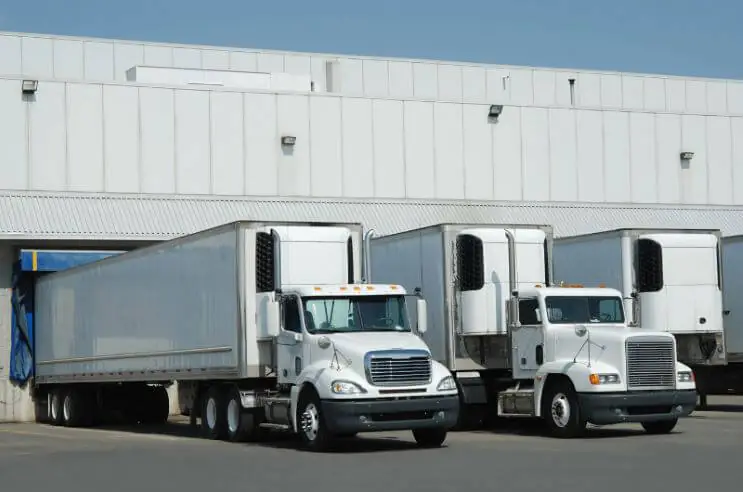
Source: www.canva.com
What Is Truckload Capacity?
Truckload capacity refers to the maximum weight or volume of cargo that a truck can safely carry.
From the definition, it follows that truckload capacity is typically measured in two ways:
- Weight limit—this is the maximum weight of the cargo that the truck can safely carry, usually measured in kilograms (kg), pounds (lbs.), or tons (t). It is important to keep in mind that the weight limit includes both the weight of the truck itself and the cargo.
- Volume limit—the maximum volume of cargo a truck can safely carry, usually measured in cubic meters (m3) or in cubic inches (in 3). The volume limit is important for lightweight but bulky materials, which may not be limited by the weight limit but rather by the volume limit.
How Can You Calculate Truckload Capacity?
In order to accurately calculate the truckload capacity, it’s important to understand a few key terms related to truck loading:
- Payload capacity refers to the weight that you can add to the cargo area of the truck.
- Curb weight is the total weight of a vehicle, excluding cargo (or passengers). The curb weight includes standard equipment such as a full tank of gas and other fluids.
- GVWR stands for Gross Vehicle Weight Rating. It refers to the same thing as the previously mentioned weight limit (the maximum weight of the cargo that the truck can safely carry combined with the weight of the truck itself (curb weight)).
- GAWR stands for Gross Axle Weight Rating. It is the maximum weight that a single axle of a vehicle can safely carry. This includes both the weight of the axle itself and the weight of the load placed onto it.
Are you getting lost in this sea of definitions? Hold on, we’re not done with the terminology yet. What if you add a trailer or something else that you can tow behind the truck?
- Towing capacity refers to the maximum weight a truck can safely tow behind it, such as a trailer, boat, or camper.
- GTW stands for Gross Trailer Weight and it is the total weight of the trailer and its cargo.
- GCWR stands for Gross Combined Weight Rating. It represents the total weight that the vehicle and trailer combination can safely carry and tow, including the weight of the truck (curb weight) and the weight of the trailer.
To determine the volume of your truck, you will need to know the following details: interior length, interior width, and interior height of the truck’s cargo area.
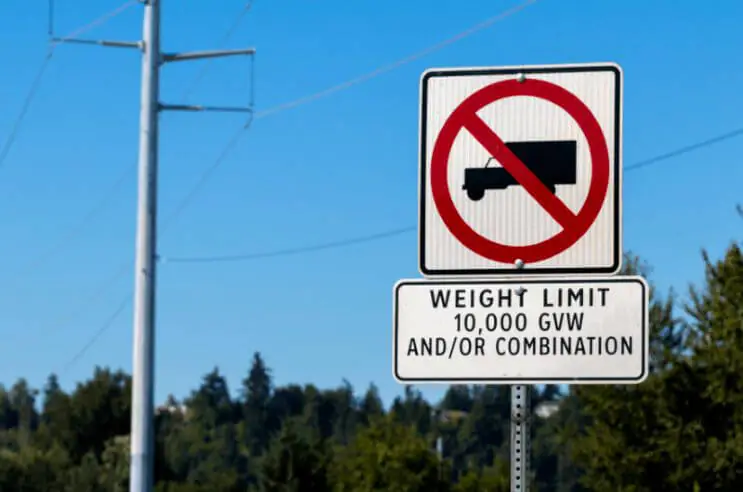
Source: www.canva.com
Where Can You Find the Weight and Volume Limits of Your Truck?
The above metrics can be found in several places:
- On the manufacturer’s label, usually located on the door frame or the driver’s side door.
- In the vehicle registration document.
- In the vehicle manual.
- On the manufacturer’s website.
All of the metrics you need may not be listed there, so it could be helpful to know how to calculate some of them yourself.
Payload Capacity Formula
- Payload Capacity = GVWR − Curb Weight
Towing Capacity Formula
- Towing Capacity = GVCWR − Curb Weight
GVCWR Formula
- GVCWR = GVWR + GTW
Volume Capacity Formula
- Volume Capacity = Length × Width × Height
What if we told you there is an even easier way to load cargo than searching for vehicle specifications in manuals and calculating the remaining metrics? Find out more below.
How Can You Efficiently Calculate Truckload Capacity?
The great thing about containers is that their dimensions are standardized. What does that mean? It means that if you have a specific type of container (for example, a 45′ HC container), its dimensions will always be the same, regardless of the manufacturer.
Trucks are also generally standardized to some extent, but the level of standardization varies depending on the specific type of truck, its function, and the region.
This standardization simplifies the use of containers and cargo spaces, making transportation easier across the globe. Moreover, you don’t need to measure every cargo space you will be using for transport—just knowing the type is enough.
This is the first piece of information that will significantly simplify the calculation of the truckload capacity for you. And the second one is to use load planning software.
How Can You Calculate Truckload Capacity Using a Container Fill Calculator?
The trick is that when you use load planning software, you don’t actually have to calculate anything. All you need to know is the type of cargo space you’re working with.
How to Select a Cargo Space in the EasyCargo Load Planning Software
In the EasyCargo app, under the Cargo Spaces tab, you will find 45 types of cargo spaces to choose from. What kinds of cargo spaces are available? Various kinds of:
- Containers,
- flatbeds,
- lorries,
- pallets,
- semitrailers,
- trailers,
- and trucks.
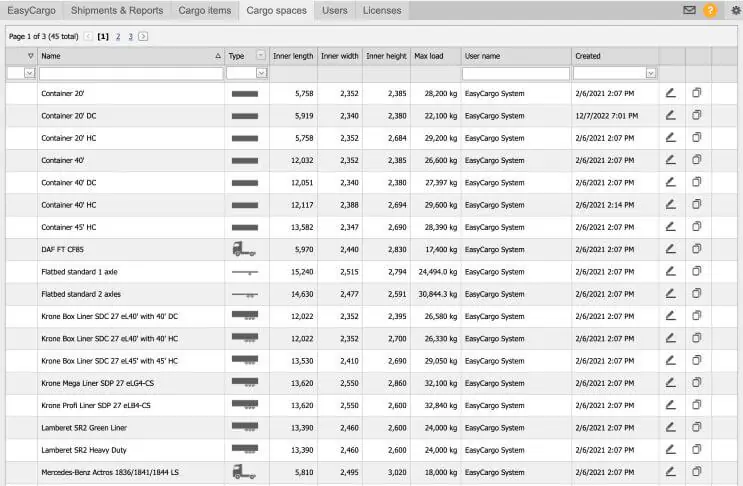
What if your cargo space doesn’t match any of the predefined types? No problem! In the EasyCargo container fill calculator, you can create a custom cargo space.
In this case, you simply select the type of cargo space and enter the required details:
- length,
- width,
- height,
- max load of the cargo space,
- track size (if needed),
- data about axles—distance, tare weight, and max load (if needed).
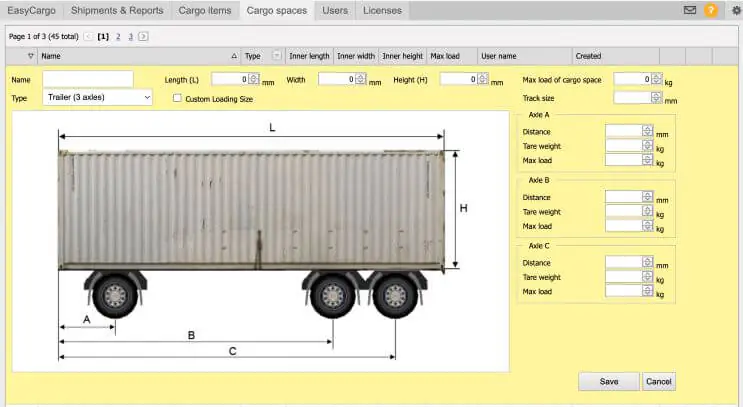
Where Can You Find Detailed Information About a Specific Cargo Space Type?
In the Cargo spaces tab, within the overview of the different types of cargo spaces, you can only see basic information such as:
- name,
- type,
- inner length,
- inner width,
- inner height,
- and max load.
But what if you want to know other metrics? Simply click on the pen and paper icon next to the selected cargo space type, and detailed information about the cargo space will appear. Just like in the image below.
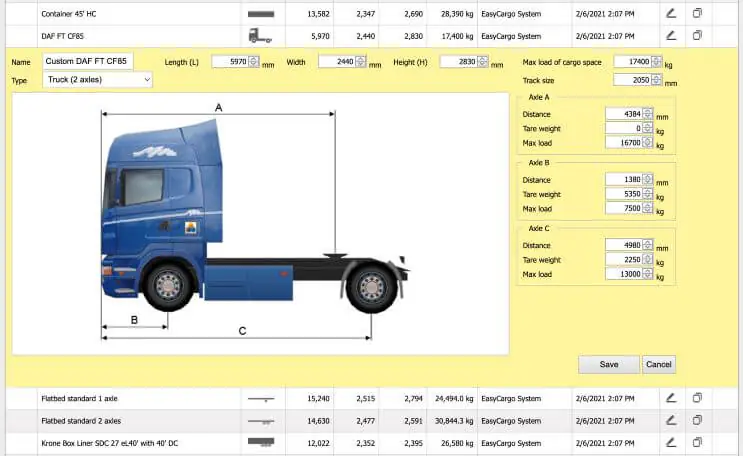
Note: It‘s clear that EasyCargo brings significant advantages, with over 2,000 companies worldwide are already using it.
How Can You Find Out How Much Cargo Actually Fits in Your Truck?
Let us say that you know all of the necessary details about your cargo. How do you figure out how much of it will actually fit? You can measure each item and calculate their volume and weight again, then stack them one by one in the truck.
That already sounds pretty complicated. Now imagine that you have some fragile items that you can’t place anything on top of and part of the shipment needs to be unloaded before the rest of the cargo. You must be feeling overwhelmed by now, right?
Use the Load Planning Software and Make Your Job Easier
With the EasyCargo container fill calculator, you don’t have to worry about how to load all of your goods into the truck. All you need to do is enter the dimensions, weight, and quantity of each item, and the software will create a load plan for you.
Additionally, after loading your items into the cargo space, you will see (in the top right corner of the application) how many kilograms (kg) or pounds (lbs.) and how many cubic meters (m3) or cubic feet (ft³) are left to reach the maximum capacity of the selected cargo space.
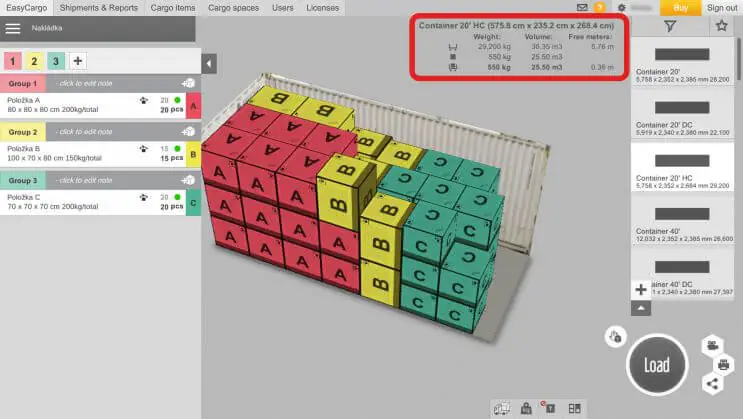
In the EasyCargo application, you can also divide individual items into priority groups. This feature is particularly useful when you need to unload part of the cargo at one location and the rest at another. With priority groups, you will have easy access to the items you are unloading first.
Are you transporting fragile items and don’t want other goods to be stacked on them? Or do you have other specific requirements? In EasyCargo, for each group of items, you have the option to select:
- Do not tilt this cargo item.
- Do not stack on this cargo item.
- Do not rotate this cargo item.
Tip: Read about the other features offered by the EasyCargo container fill calculator that will make load planning easier for you.
Frequently asked questions
1. What is the difference between GVWR and payload capacity?
GVWR is the maximum weight of the cargo that the truck can safely carry combined with the weight of the truck itself (curb weight). On the other hand, payload capacity is the maximum weight of cargo that a vehicle can carry, excluding the vehicle’s own weight and its passengers.
2. What happens if you exceed the payload capacity?
Exceeding the payload capacity has many consequences, ranging from more serious ones to less significant ones. One of the main consequences is damage to the vehicle. Trucks and other vehicles are designed for a specific capacity. Overloading a truck can put excessive strain on the suspension, transmission, tires, and the engine, leading to premature wear.
Overloading a vehicle can also make it harder to control, affecting braking distance, acceleration, and overall stability, which increases the risk of accidents. Last but not least, you may face legal consequences, such as fines, penalties, jailtime, or further legal liabilities in the event of an accident.
Are You Ready to Try EasyCargo?
Why make your life harder when you know there’s a simpler way? We have just shown you how to save time and maximize space when creating your load plan. So, what are you waiting for? Try the EasyCargo container fill calculator for free for 10 days. And trust us, you won’t want to go back to the time-consuming manual load planning.




